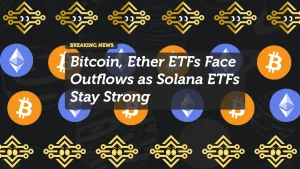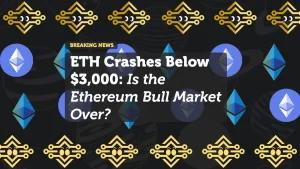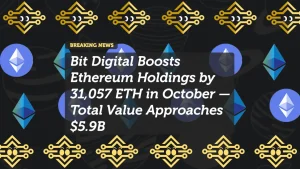
Ethereum Slips Below $4,500 Despite Grayscale Staking 300,000 ETH
Ethereum (ETH) dropped under the $4,500 mark on Monday, even as institutional investors doubled down on accumulation. The move came shortly after Grayscale Investments confirmed staking 300,000 ETH from its Ethereum Trust and ETF reserves, a decision intended to enhance yield and strengthen long-term investor returns.
Despite this bullish fundamental backdrop, the ETH price correction signals growing caution among traders as the crypto market consolidates after a volatile start to October.
ETH Price Dips Amid Broader Market Pullback
According to CoinMarketCap, Ethereum traded at $4,468 at press time, down around 2.4% in the past 24 hours. Trading volume slid 15%, reflecting reduced speculative activity following last week’s strong rally toward $4,650 — its highest level since August.
The downturn mirrors weakness across broader risk assets as the U.S. dollar index (DXY) rebounded and traders priced in uncertainty over the Federal Reserve’s rate-cut timing. Bitcoin (BTC) also fell slightly to around $112,800, while major altcoins like Solana (SOL) and Avalanche (AVAX) corrected between 3% and 5%.
Grayscale Stakes 300,000 ETH in Institutional Push
In a filing earlier this week, Grayscale revealed that it had staked 300,000 ETH (worth approximately $1.35 billion) across validator nodes linked to its Grayscale Ethereum Trust (ETHE) and Grayscale Ethereum Mini Trust (ETHM).
This marks one of the largest institutional staking deployments since Ethereum’s 2022 transition to Proof-of-Stake.
“By integrating staking rewards into our ETP structure, we aim to improve the yield profile for investors and reinforce confidence in Ethereum’s network security,” said a Grayscale spokesperson.
The newly staked ETH represents roughly 0.25% of Ethereum’s total circulating supply, with expected annual yields between 3.8% and 4.5%.
Institutional Demand Holds Steady
Despite near-term price pressure, institutional appetite for Ethereum remains firm. On-chain data from Nansen shows consistent inflows into exchange-traded products (ETPs) and staking pools since mid-September, with total institutional ETH holdings now surpassing 6.4 million ETH across major custodial platforms.
Fund managers like Bitwise and VanEck have also reported renewed interest from pension and endowment clients, signaling that the asset continues to mature as an institutional portfolio component.
“Staking has effectively become Ethereum’s bond market,” wrote Galaxy Research analyst Alex Thorn. “Institutions are increasingly comfortable viewing ETH as a productive yield-bearing asset rather than just a speculative token.”
Technical View: Support Levels to Watch
Technical charts show Ethereum testing a key support zone around $4,420, aligned with the 50-day moving average. A decisive break below this level could open the door to $4,250 or even $4,100, where significant demand previously emerged.
On the upside, immediate resistance lies at $4,580, followed by the psychological $4,700 level. A breakout above this range would confirm renewed bullish momentum and possibly reignite the push toward $5,000, last tested in 2021.
Outlook: Short-Term Caution, Long-Term Conviction
While Ethereum’s latest dip may unsettle retail traders, analysts view the correction as a healthy retracement within a broader uptrend.
“Ethereum’s fundamentals are stronger than ever,” said market strategist Ryan Selkis. “Institutional staking, Layer-2 adoption, and ETF inflows are driving a structural bid under the market — the dips are being bought.”
With Grayscale’s staking expansion and renewed demand for ETH ETFs, Ethereum appears well-positioned for a recovery once macro volatility stabilizes.
At current levels, long-term holders continue to accumulate, suggesting confidence that the network’s evolving staking economy could fuel ETH’s next leg higher.
✅ Key Takeaways
- Ethereum slips below $4,500 amid short-term market cooling
- Grayscale stakes 300,000 ETH, signaling institutional confidence
- Technical support seen at $4,420–$4,100 range
- Institutional staking and ETF inflows strengthen long-term outlook
















